With good access, continuous whitewater, grade III gorges plus an optional grade IV upper section with a chockstone, this is bound to become an East Coast classic day trip for intermediate to advanced packrafters.
“The run feels similar to the classic narrows section on the Upper Waiau. The tight gorge where you float beneath a chockstone is a unique experience. Whilst nothing can compare to the Gates of Argonath on the Upper Hokitika, this surely is the Gates of Ashvegas.” – Deane Parker
Thanks to Deane for the info, photos and videos. Deane and his crew first packrafted this run in October 2024. The run had been done before by other packrafters, but details of those teams are unknown.
View Larger Topographic Map
Approach: bikerafting or walking?
Although there’s a 4WD track all the way to the put in, it is rutted and swampy.
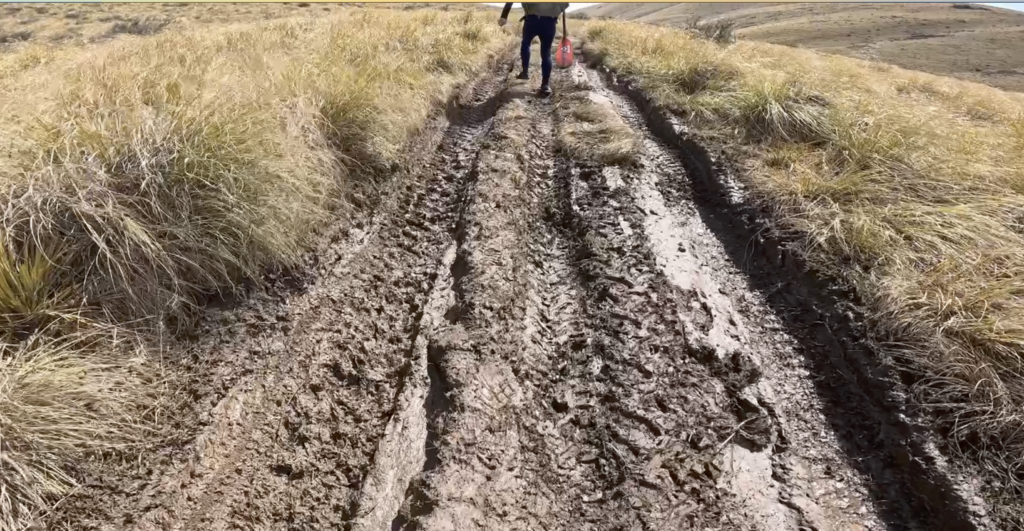
With the technical and continuous nature of the paddle, bikerafting isn’t really the best tactic for this run. During one of Deane’s trips, some quad bikes passed them near the start, but Deane and his crew ended up beating them to the hut… We suggest keeping it simple and walking in.
From the take out by the Hakatere Heron Rd bridge, follow the Te Araroa Trail west. At Paddle Hill Creek, Te Araroa joins the 4WD track, which is in fairly poor condition. Sturdy footwear and a trekking pole or two is recommended.
Continue on the 4WD track past the Potts Hut/Te Araroa turn off to a small saddle, then down into the South Branch catchment.
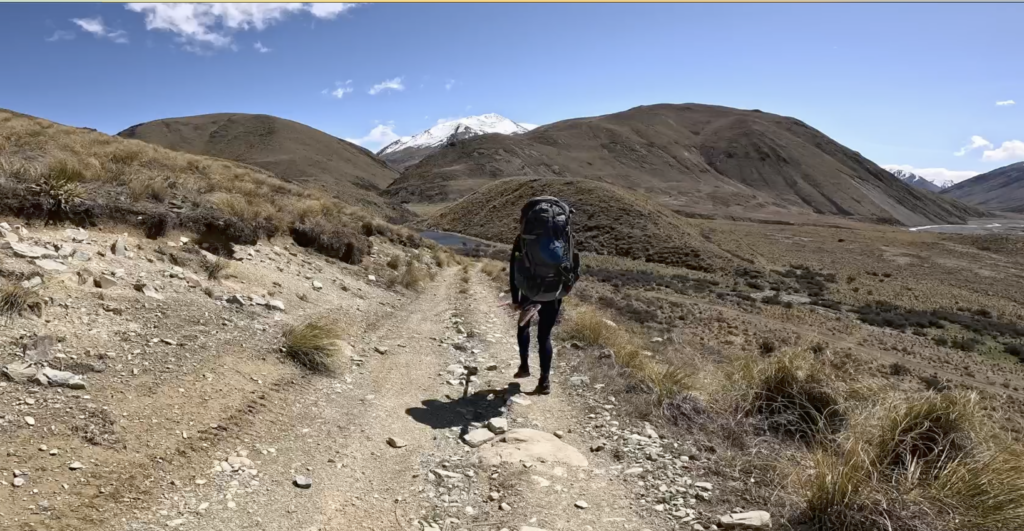
The track continues to Boundary Creek Hut (8 bunks), which is fairly rustic. It would be a nice place to spend the night if you’re arriving from further afield, or prefer an overnight journey. Someone might enjoy the hike in over the Arrowsmith Station Pyramid track, running the upper section of this run..
To get to the put in, continue along the 4WD track as it crosses Boundary Creek, and zig zags towards the start of the grade IV Gates of Ashvegas gorge. Paddlers wanting to avoid the grade IV section could probably put in somewhere below the Boundary Creek confluence, the river banks are fairly steep with scree slopes or scrub, so entering here might take some scouting to find a good way in.
On the river
This run needs a solid team at all flows. The continuous nature of the whitewater means your crew need to be paddling confidently at the grade. A swim here could be long and serious.
Breaking a paddle or losing a boat will mean that you’ll have to find a spot to scramble out (hopefully) on the true left and follow the marked walking route out of the main gorge. Its a fair way from anywhere, so make sure you’ve got a distress beacon carried on you (not in your boat) should something go awry.
Some of the banks you can move around on, some are covered in Matagouri, and others are sheer cliffs: boat scouting is an essential skill here.
Chockstone Gorge (IV) a.k.a. the Gates of Ashvegas
The gorge is intimidating, but it goes and it goes good!
The entrance rapids is a boulder-strewn chicane, with a big sieve on river right: don’t screw it up. The rapid is difficult to cover from the shore; you really need a strong paddler to go first and not swim. They can cover it from the good-sized eddy immediately above the chockstone.
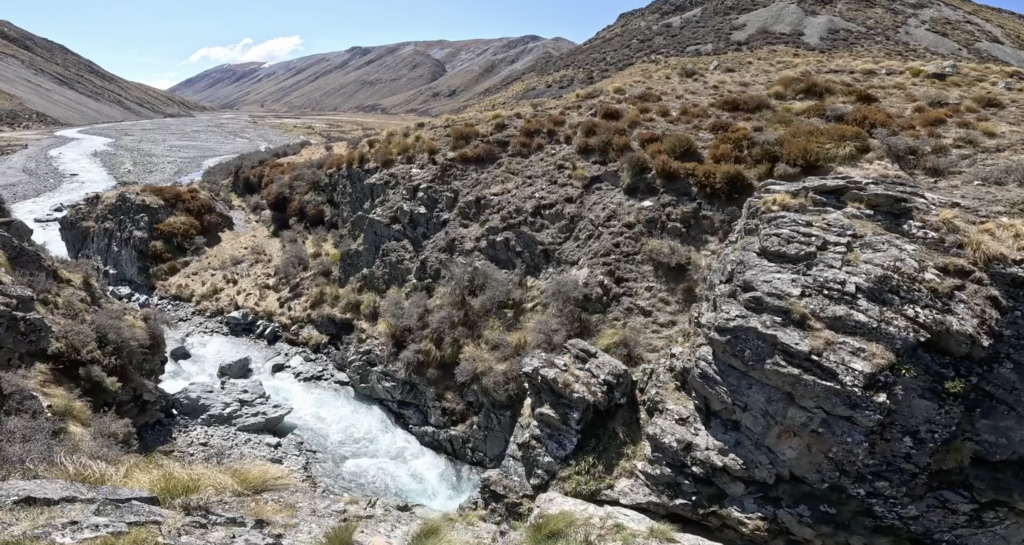
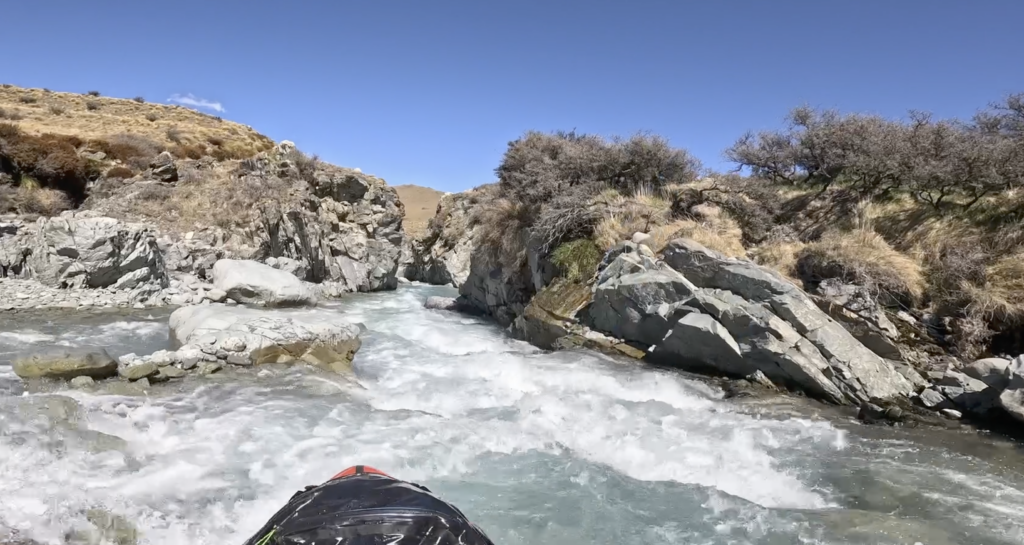
If you’re picked survivable flows, you can float beneath the chockstone, which is a fairly rare experience!
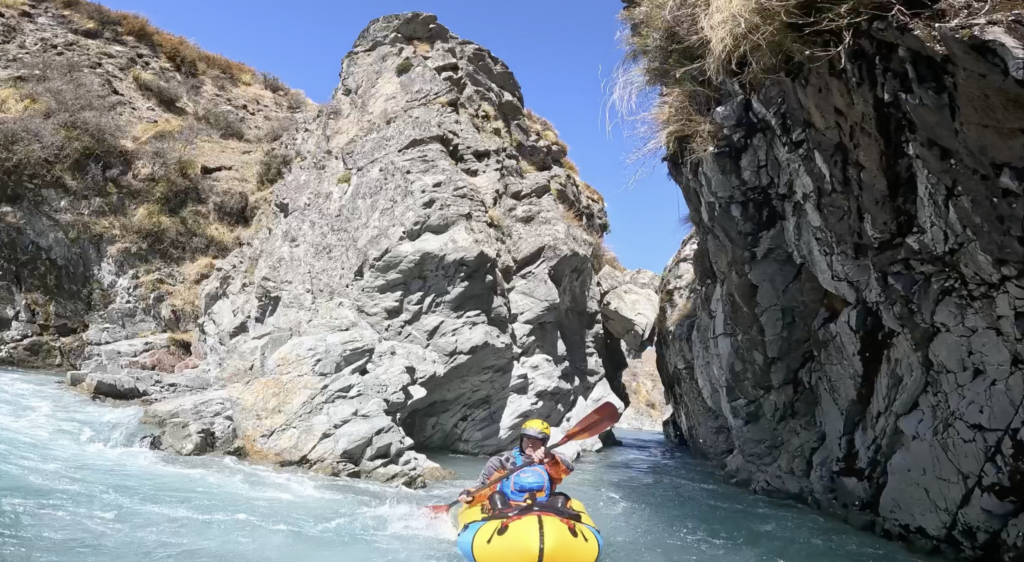
From here hold on to your hat for the next 500 metres. Canyons, awesome ledges and boofs, with small eddies abound.
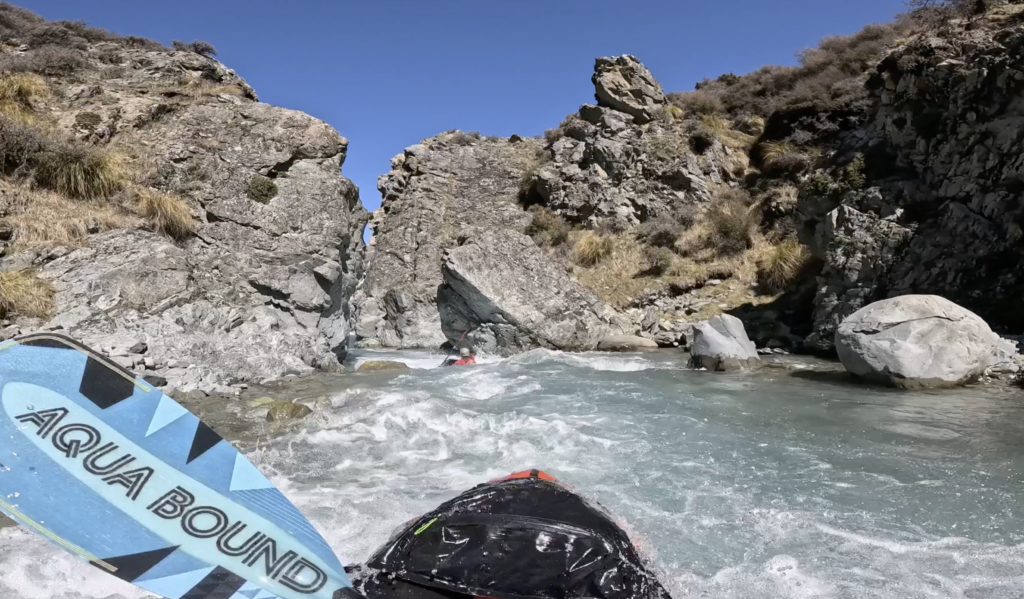
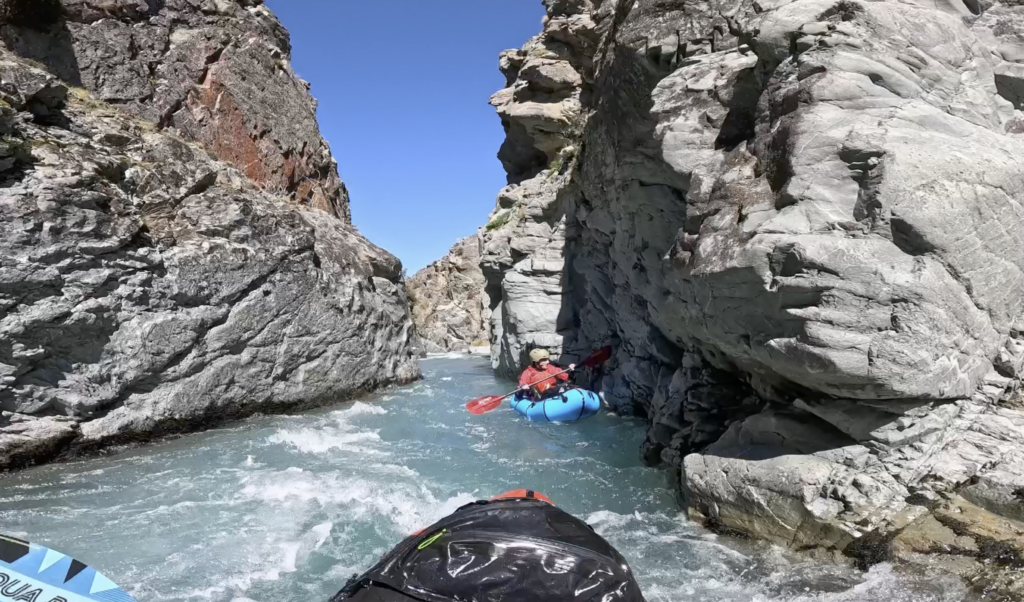
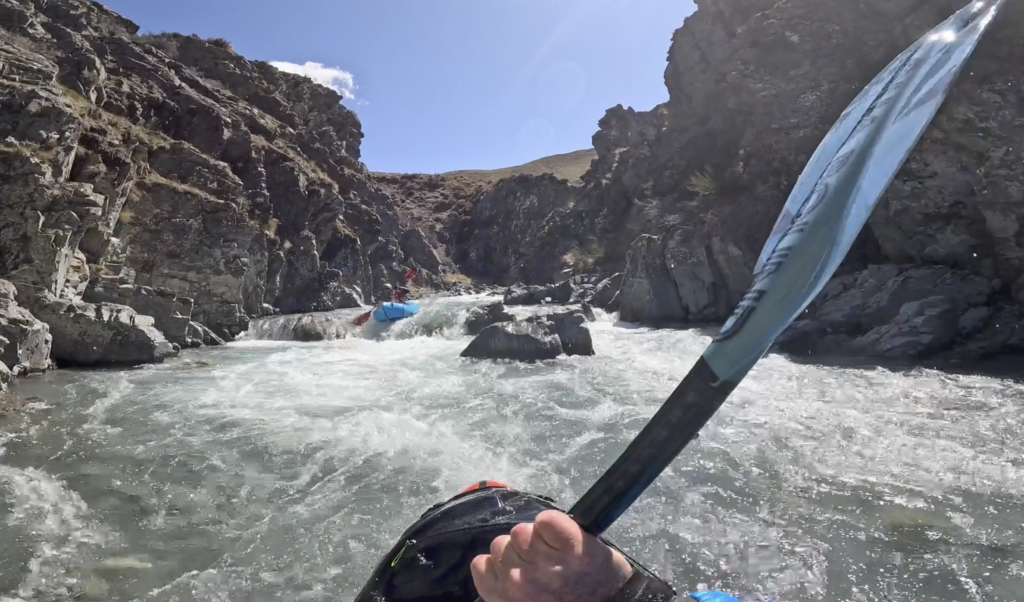
The Gorge ends as Boundary Creek enters on the true right.
Boundary creek confluence to below Harding Creek (III/III+)
From Boundary Creek, there’s a short warm up before things get tricky again. The next few kilometres are tight, technical and continuous grade III paddling (maybe III+/IV above 25 cumecs).
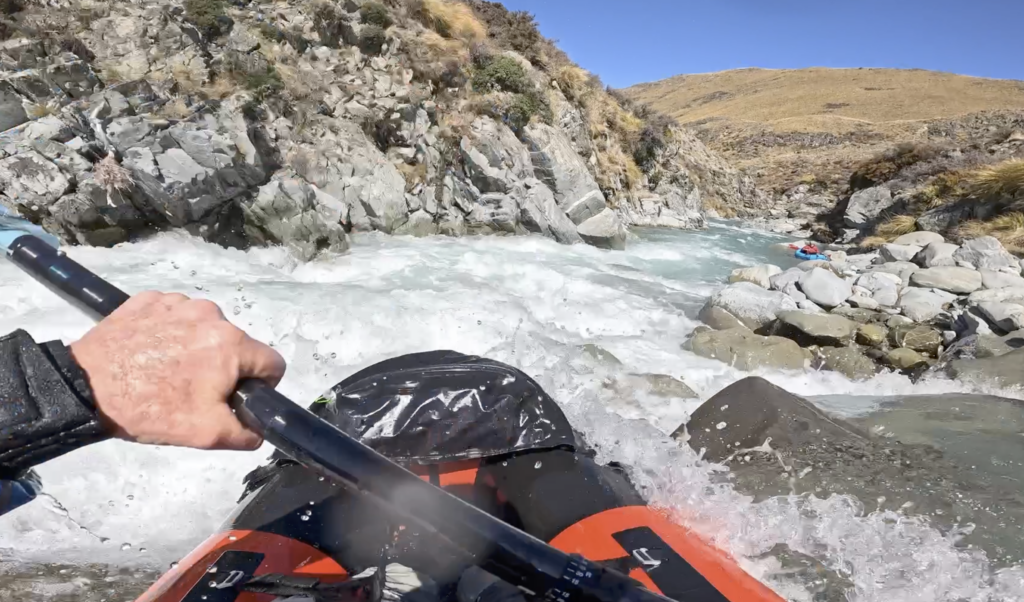
Below Harding Creek to the bridge take out (II+/I)
The gradient finally begins to ease a bit, but expect constant action for the next couple of km. When the gorge banks ease back, the river relents back to grade I braids. Don’t forget to watch out for hazards as you wind down from the fantastic paddling.
Gauge
There are two gauges to consider:
Deane paddled at 7.1m on Buick, and 18 cumecs at Mt Somers.
“This was a good flow. I’m sure it’d go at lots more, but boy it would get full-on! I’ve heard of a party doing it at 12 cumecs, which is probably near the low end of what is feasible.”







It goes with less water! Thanks for Dean and Muel for the company and hot tips. This is a fantastic trip, we were stoked to get in there.
Chose a wet day to paddle. Nice, despite the weather.
Walk took 3hours at a moderate pace. 1.5hours on the water. Got changed in the hut out of the rain, what luxury! Scouted gorge before putting on.
Lovely section, not particularly hard but continuous – it just keeps going.
Fantastic!
Great run, did it solo. Took 2hrs to walk the 15km track in (DOC recommends 5hrs). Then 1.5hrs on the water. Was walking fast… Scouted the upper entrance from above the gorge prior to inflating the boat. Straightforward line, Deane’s video shows it well. More water would be nice for the lower section (7.1 at Buick), but didn’t hit too many rocks. Wouldn’t want to do it with less water! Suspect more water would make it easier with more lines opening up.